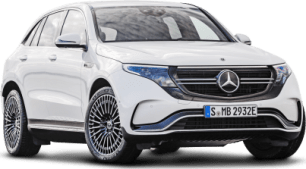The EQA 250 is genuinely relaxing to drive. Of course, a lot of the credit for this must go to the powertrain, which excels within the city limits.
The front-mounted electric motor’s 375Nm of torque is nothing to be sneezed at, with its instantaneous delivery helping the EQA 250 get up to 60km/h quicker than most internal-combustion engine (ICE) vehicles, some sports cars included.
That said, the EQA 250’s smooth acceleration does become more leisurely as you approach and exceed highway speeds. It performs well enough, but if you want something that has more bandwidth, consider waiting for the more potent EQA 350.
Either way, the EQA 250 does an excellent job of regenerative braking, with Mercedes-Benz offering owners the power of choice. Simply put, if you want to drive it like ‘a normal car’, you can, and if you want to fully embrace zero-emissions driving, you can, too.
There are five modes to choose from, with D Auto using road data to work out the best approach, while the other four (D+, D, D- and D--) can be selected by the steering wheel’s paddle-shifters.
D offers the natural approach, with a slight amount of regenerative braking occurring when lifting off the accelerator, while D-- (my favourite) turns up the aggressiveness to (almost) enable one-pedal driving.
Yep, the EQA 250 can unfortunately only slow things down to a crawling pace and not a complete stop due to its annoying lack of auto-hold functionality for the electric park brake.
When you do need to use the friction brakes, like other all-electric vehicles, the transition to them isn’t the smoothest. In fact, they’re quite grabby initially.
Most drivers can probably fine-tune their inputs over time to counteract this, but it’s still a thing, nonetheless.
Handling-wise, the EQA 250 doesn’t exhibit that much body roll, considering it’s an SUV, although the underfloor positioning of its battery helps to lower its centre of gravity.
Speaking of which, the EQA 250’s two-tonne-plus kerb weight is undeniable when pushing hard through the bends, often causing understeer and therefore working against the driver.
Another factor to consider is grip, the EQA 250’s front tyres can be overwhelmed when encountering a heavy right foot off the line or out of a bend. The upcoming AWD EQA 350 is unlikely to suffer from the same problem.
What feels much sportier, though, is the EQA 250’s electric power steering, which is surprisingly direct when attacking the twist stuffy. It’s also appreciably light in hand, unless the Sport drive mode is called upon, in which case a decent amount of heft is added.
Despite stiffer springs dealing with battery’s extra weight, the EQA 250’s ride is also pretty comfortable, although our test vehicle had the AMG Line package fitted, with its 20-inch alloy wheels managing to catch road imperfections a little too easily.
Of course, the suspension set-up (independent MacPherson-strut front and multi-link rear axles) does come with adaptive dampers, but they’re best left in their Comfort setting, as the Sport mode reduces the ride quality while not meaningfully improving handling.
And as far as noise levels are concerned, without an engine labouring away, wind and tyre noise have become quite prominent in the EQA 250, although turning up the sound system does help to drown them out. Either way, more sound deadening would have been nice.





